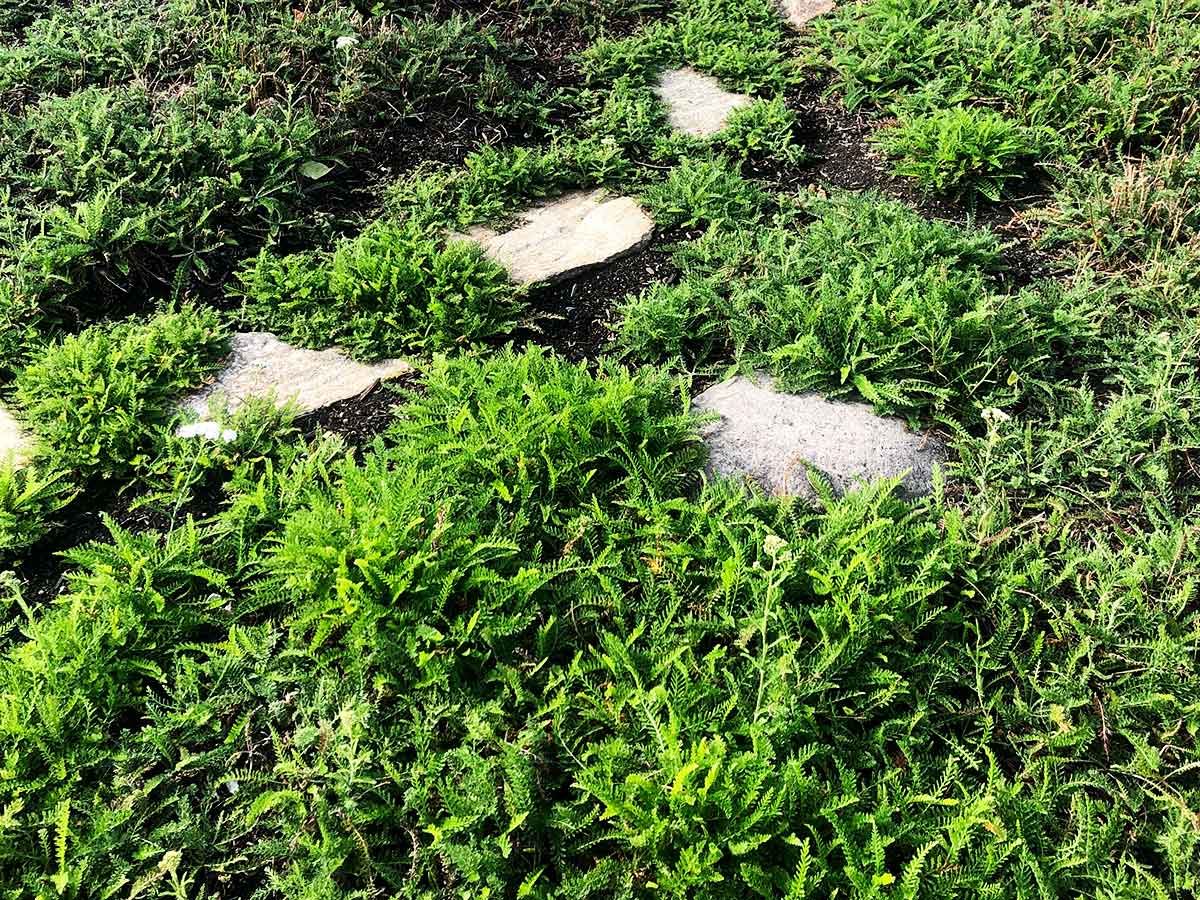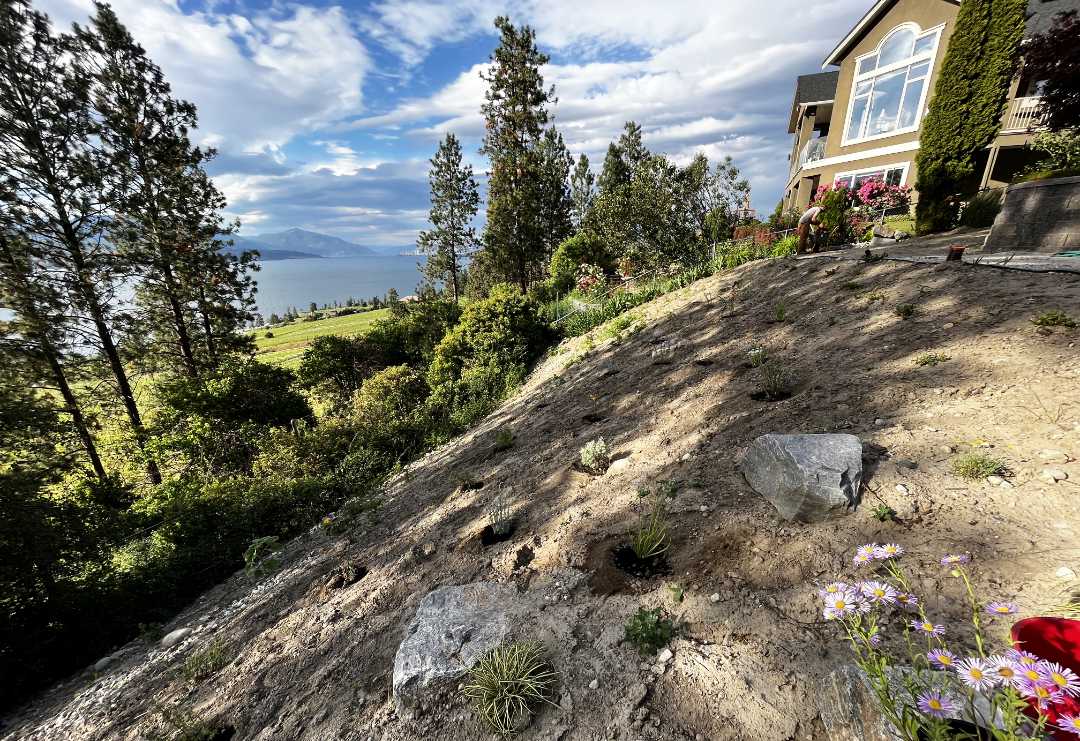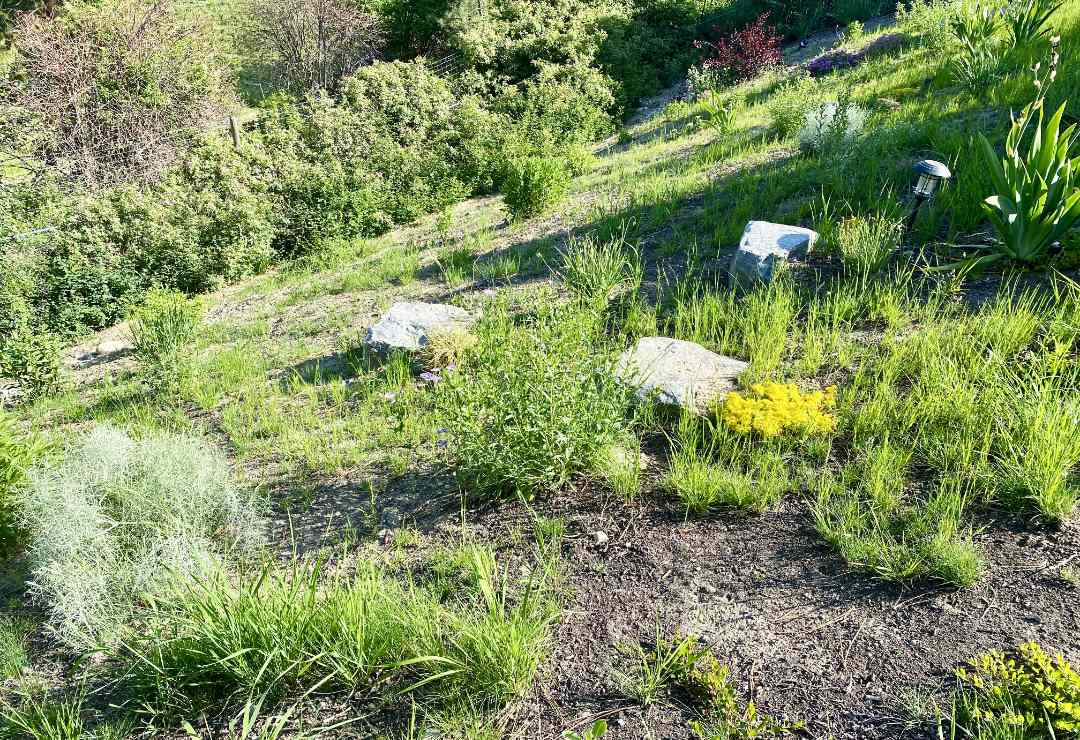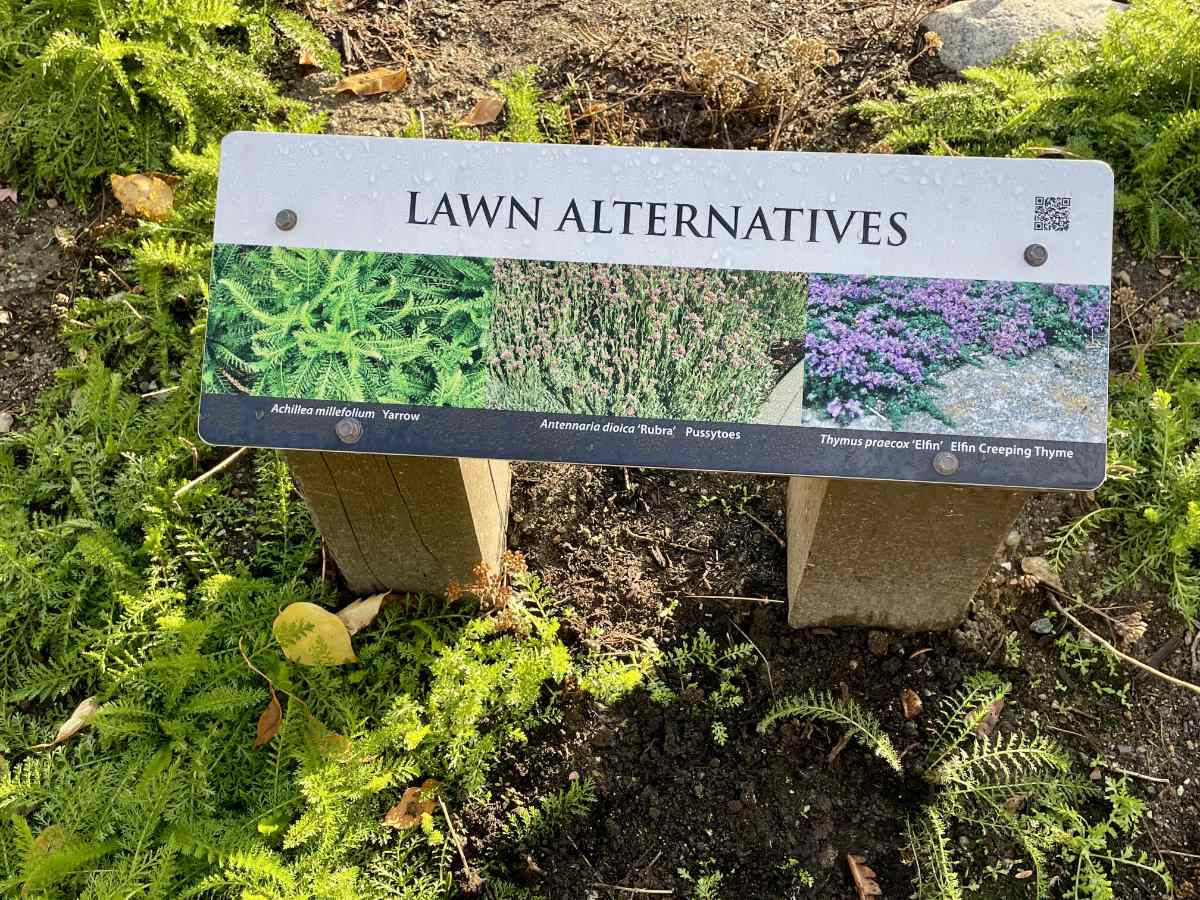GARDENING WITH NATURE
Article by Sigrie Kendrick
Rethinking Lawns in the Okanagan
I have had the pleasure of visiting a great many beautiful gardens recently, and l have been overjoyed to notice the trend of fewer turfgrass lawns and growing interest in Okanagan lawn alternatives.
The Problem with Traditional Lawns
Traditional turfgrass lawns have long been a symbol of suburban living throughout the Okanagan Valley, but they come with a hefty environmental price tag in this semi-arid region.
A typical lawn requires approximately 2.5 to 5 centimetres of water per week during the growing season just to maintain that pristine green carpet in a region that receives only 30-38 centimetres of annual precipitation.
Beyond the immediate water consumption, turfgrass lawns demand significant resources throughout the Okanagan’s growing season.
- They require frequent watering, fertilization, pesticide applications, and regular mowing, all of which contribute to environmental stress and increased household expenses.
- In the Okanagan’s dry climate, maintaining traditional lawns can account for 60 percent of residential water usage during peak summer months, placing enormous strain on local water systems during the region’s driest period.
- The environmental impact extends beyond water consumption. Turfgrass often requires synthetic fertilizers and pesticides that can leach into groundwater systems and contribute to nutrient pollution in nearby waterways
- Additionally, frequent mowing is a source of carbon emissions and contributes to noise pollution in residential neighbourhoods.


The Case for Change
Embracing Okanagan lawn alternatives can lead to more resilient and visually appealing landscapes. Reducing turfgrass areas can dramatically decrease your water usage while creating more sustainable and diverse landscapes perfectly suited to the Okanagan’s climate.
Native plant alternatives such as sagebrush, penstemon, and native bunch grasses require significantly less water than traditional turfgrass, once established, as they are naturally adapted to the region’s hot, dry summers and cold winters.
This reduction can save thousands of litres of water annually for the average Okanagan household.
Ground covers like kinnikinnick, native sedums, or Achillea millefolium (Yarrow) can provide visual appeal while requiring minimal irrigation after establishment.
These alternatives also offer additional benefits such as supporting local pollinators, reducing soil erosion on the region’s slopes, and requiring less maintenance overall.
Where to Begin
To reduce your environmental footprint, identify high-maintenance areas of your lawn that receive the most water or are difficult to maintain. Remove grass in these zones first, replacing them with drought-tolerant alternatives.
Common target areas include:
- steep slopes
- areas under trees
- narrow strips along pathways
Rather than removing all turf at once, consider a phased approach. Start by reducing lawn size by 20 per cent in the first year, allowing you to tabulate water savings and adjust your landscape design before continuing.
You can replace removed turf with native wildflower meadows, rock gardens, vegetable plots, or water-permeable hardscaping. Each option offers different water-saving benefits and maintenance requirements.


Prioritize the Toughest Zones
When planning turf reduction in your garden, focus on areas that provide the greatest water-saving potential.
South-facing slopes, areas far from water sources, and sections that receive full sun typically consume the most irrigation water and are most challenging in our region’s intense summer heat. These zones offer the best opportunities for conservation through alternative landscaping.
Worth the Investment
The initial investment in turf reduction typically pays for itself within two or three years through reduced water bills, decreased fertilizer and pesticide costs, and lower maintenance requirements.
Native plants and non-native xeric alternatives will require less frequent watering, no fertilization, and minimal pest management once established. Many homeowners find that reduced turf areas become more interesting and biodiverse than traditional lawns, attracting beneficial insects, birds, and other wildlife. This ecological enhancement adds value to your property while contributing to local environmental health
Take the First Step
Begin by assessing your current lawn’s water usage and identifying areas that could benefit from alternative landscaping better suited to the Okanagan’s climate.
Contact your local water utility, as many municipalities offer rebates or incentives for xeriscaping, turf reduction and Okanagan lawn alternative projects. The Regional District of Central Okanagan, City of Kelowna, and other local governments often provide resources and financial support for water-wise landscaping initiatives.
A Landscape That Gives Back
Reducing turf grass areas represents a practical and effective way to conserve water while creating more sustainable, diverse, and interesting landscapes that benefit both homeowners and the broader environment.

Be sure to check out the Lawn Alternatives Garden in the UnH2O Demonstration Garden on Gordon Drive in Kelowna
Sigrie Kendrick is a master gardener and executive-director of the non-profit Okanagan Xeriscape Association.

